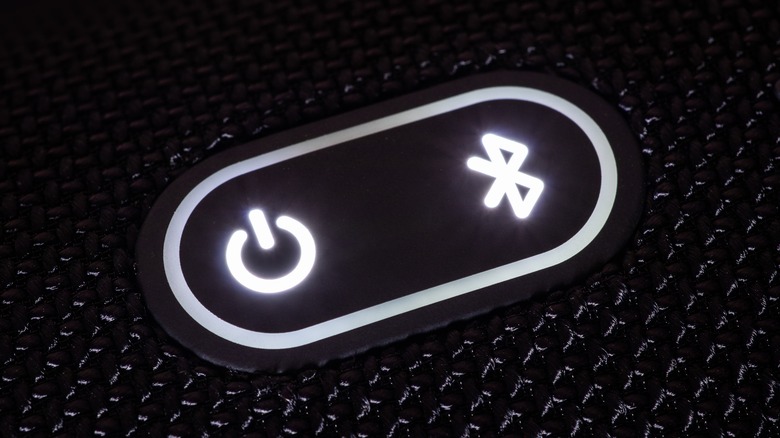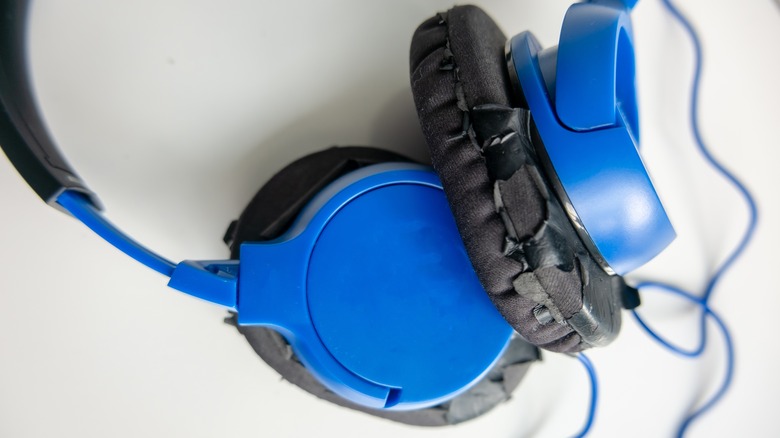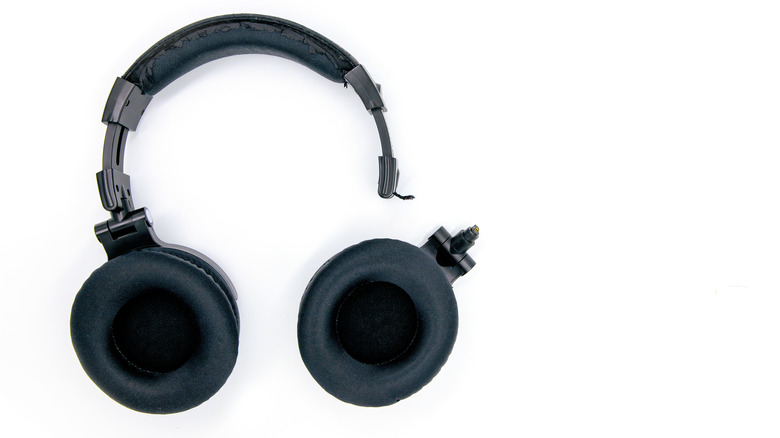5 Key Signs That It's Time To Replace Your Headphones
Whether you're a podcast connoisseur, like jamming out to your favorite tunes on your daily commute, or need some beats to power through a workout, headphones are likely an important part of your audio life. When your headphones are working right, they deliver an immersive audio experience you can take with you wherever you go. That's why it's so frustrating when you can't get them to connect to your device, or the sound comes through muffled or distorted, disrupting the listening experience.
While technical hiccups now and then are normal, if you find them happening more often than not, it could be a sign your headphones are on their last legs. Repairing them is one option, but sometimes, it's best to move on and invest in a new pair of headphones. If you're unsure of whether it's time to trade in your old headphones for a new set, there are a few things you can look for to help you decide. Here, we take a look at the five signs that'll let you know it's time to replace your headphones.
Audio quality takes a hit
You most likely invested in your headphones so you could experience clear, high-quality audio even while on the go. Muffled or distorted audio is often the first indicator something has gone wrong and could be a sign of internal damage. While most headphones you purchase will stand up to extensive use, they're not immune to the gradual effects of wear and tear. Over time, frequent use will take its toll, leading to a noticeable drop in audio quality.
The longer you use your headphones, the more likely it is that their internal components will wear out. When you try to listen to music at high volumes, the headphones' aging components won't be able to provide the same level of audio fidelity as when you first bought them. As a result, you're likely to experience clipped or muffled sounds that detract from the listening experience.
This shift in audio quality doesn't typically happen overnight. It's a gradual process, almost imperceptible at first, where the headphones' performance dwindles over an extended period. Every note and every beat loses a bit of clarity, a subtle yet steady decline that signifies the wear of the inner workings of your headphones. When this happens, it's a sure sign it's time to replace your headphones.
Bluetooth connectivity issues
While wired headphones have some advantages, the convenience of Bluetooth headphones is undeniable. The ability to wirelessly connect to audio devices and the freedom of movement without being tethered by cords have made them a popular choice. However, like all gadgets, these wireless wonders are not exempt from the wear and tear of regular use, and as they age or suffer damage, the quality of experience can deteriorate.
One common issue users encounter is audio dropouts — those annoying moments when sound intermittently cuts out during playback, disrupting the smooth, immersive audio experience. Distance sensitivity may also become a problem; you might realize moving just a few steps away from the connected device results in a loss of audio signal. Pairing issues can add to the frustrations, with headphones becoming finicky about connecting to devices or randomly disconnecting mid-use.
Another common issue is using headphones that aren't compatible with the latest Bluetooth technology, such as Bluetooth 5.3. The latest Bluetooth technology delivers an enhanced audio experience, including faster pairing, an extended battery life, and improved audio transmission.
If your older headphones aren't equipped to take advantage of these advancements, you may experience subpar performance and missed features like dual audio or low energy consumption. Upgrading to a new set of headphones with the latest Bluetooth technology can unlock a host of improvements for a superior listening experience.
Worn out ear cushions
While scuffed-up ear cushions may not seem like a big deal, they can have a serious impact on your headphone's sound quality and overall listening comfort. If you've noticed a loss of bass or overall sound fidelity, it's time to take a closer look at your headphone's ear cushions because they could be to blame. Well-maintained cushions provide an acoustic seal that's crucial for an optimal listening experience. When these cushions degrade, it can lead to a noticeable decline in audio performance.
Apart from sound quality, when your cushions get old, their physical appearance also declines. Worn, torn, or faded cushions can make even high-quality headphones look old and neglected, impacting your overall satisfaction and experience. Ear cushions also absorb sweat, oil, and dirt the longer you wear them, which could lead to skin irritations or allergies. Regular cleaning can minimize this, but eventually, replacement becomes inevitable, ensuring both comfort and optimal audio quality.
Compromised comfort
Wearing headphones should be an enjoyable experience, so if you're experiencing pain or discomfort, it's a clear indication something is wrong. While headphones are designed for ease and comfort during listening sessions, as they age, various factors can compromise their ability to do so. Keep your headphones around long enough, and the padding and materials will begin to deteriorate, leading to less cushioning and increased pressure on the ears, resulting in soreness or fatigue during prolonged use.
Structural issues like an overly tight headband or misaligned ear cups can also contribute to discomfort. These issues can cause an uneven distribution of pressure, leading to pain or discomfort. If you stick with an old pair of headphones, you may miss out on the advanced, ergonomic designs featured in newer models. Uncomfortable headphones can also distract from the listening experience, making it less enjoyable or, in some cases, unbearable. While you can do some things to fix these problems, investing in a new set of headphones is often the best solution.
When repairs reign
Sometimes, it's hard to give up on a pair of beloved headphones, but when repairs become frequent and costly, it may be time to consider a replacement. All electronic devices have a lifespan, and the need to repair them frequently can be one of the clearest indications they may be approaching their end. If your headphones are no longer under warranty, the costs of fixing them can add up over time, sometimes surpassing the price of a new pair of headphones.
The need for constant repairs often points to an underlying issue that may not be easy to fix, and finding a repair service for out-of-warranty headphones can be challenging, not to mention cost-prohibitive. While repairing high-end Bose or Beats headphones is often worth it, holding onto a pair of low-cost headphones is often more trouble than it's worth. Holding onto old headphones may also mean missing out on enhanced features like improved sound quality, comfort, and reliability that come with newer models.





